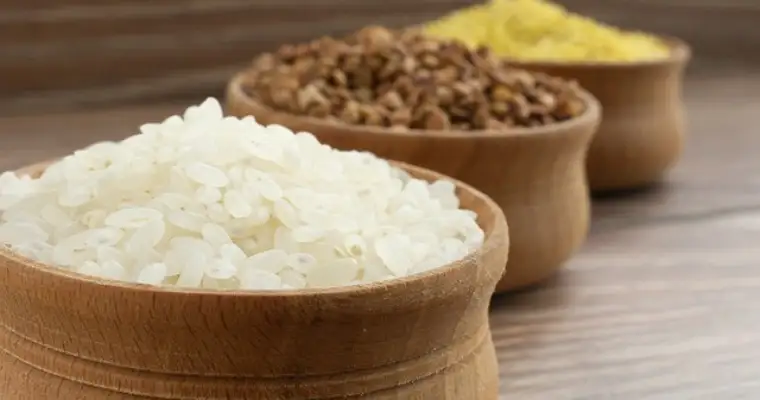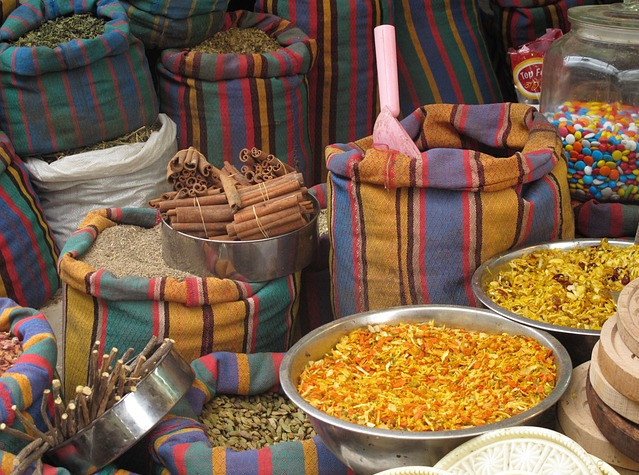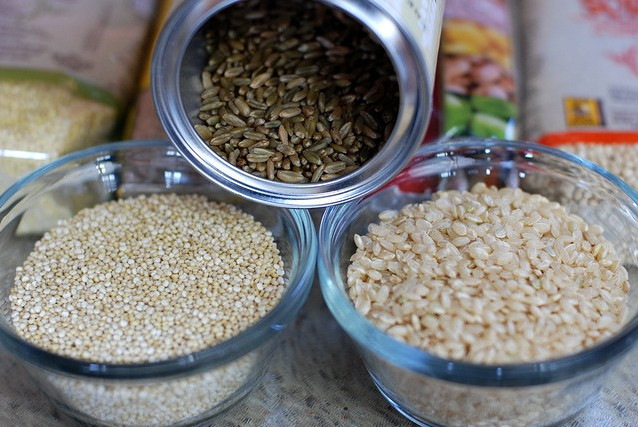Ancient Grains and Rice

Ancient Grains and Rice for your Modern Meals
In the world of Whole Food Plant-Based eating, Ancient grains and Rice are cherished staples that offer not only incredible versatility but also an array of health benefits.
These humble yet remarkable grains have nourished civilizations for centuries and continue to be a vital part of modern-day diets. In this blog, we will explore the world of Ancient grains and Rice.
Uncovering their rich history, nutritional value, and how they can be incorporated into your modern plant-based meals.
Join us on our latest exciting culinary journey!

The Ancient Grains: Timeless Treasures
The Magic of Amaranth: Amaranth with its vibrant colors and impressive nutritional profile was a staple in the diets of the Aztecs and Incas. Packed with protein, fiber, and minerals, amaranth makes an excellent addition to plant-based meals, from breakfast porridge to hearty grain salads.
Quinoa The Mother Grain: Originating from the Andean region of South America, quinoa gained global recognition for its high protein content and complete amino acid profile. This ancient grain is perfect for plant-based diets, as it adds a delightful nutty flavor to salads, soups, and even burgers.
The Wholesome Power of Farro: Farro an ancient wheat variety, has been cultivated in the Mediterranean region for thousands of years. With its nutty taste and chewy texture, farro is a fantastic source of fiber and nutrients. It can be used in risottos, grain bowls, or as a hearty alternative to rice.
Buckwheat: The Nutritional Powerhouse: Despite its name, buckwheat is not related to wheat and is naturally gluten-free. This ancient grain is packed with fiber, protein, and essential minerals like magnesium and manganese. Buckwheat can be ground into flour for pancakes, used as a base for porridge, or added to salads for a nutritious boost.
Millet Small but Mighty: Millet has been cultivated for thousands of years and is a staple in many African and Asian cuisines. It is a gluten-free grain that offers a good amount of protein, fiber, and antioxidants. Millet can be cooked fluffy like rice, used in pilafs, or even ground into flour for baking.
Kamut Ancient Wheat with a Twist Kamut is an ancient variety of wheat with a rich, buttery flavor. It has a higher protein content than modern wheat and is an excellent source of selenium, zinc, and magnesium. Kamut can be used in salads, soups, and baked goods, providing a distinctive taste and nutritional benefits.
Teff The Tiny Nutritional Dynamo: Teff is a tiny grain native to Ethiopia, known for its high iron and calcium content. It is gluten-free and packed with fiber and protein. Teff flour can be used in baking, while the whole grains can be cooked into porridge or added to stews for a nutritious boost.
Spelt The Ancient Wheat Alternative:
Spelt is an ancient grain that has gained popularity as an alternative to modern wheat. It has a nutty flavor and a higher protein content. Spelt flour can be used in baking, and the cooked grains can be used in salads, risottos, or as a side dish.
Einkorn The Original Wheat: Einkorn is considered one of the earliest cultivated forms of wheat, dating back thousands of years. It has a rich, nutty flavor and is packed with nutrients like protein, fiber, and essential minerals. Einkorn flour can be used in baking, and the cooked grains can be incorporated into soups, salads, or grain bowls.
Sorghum Versatile and Gluten-Free: Sorghum is a gluten-free ancient grain that is widely cultivated in Africa and Asia. It is rich in antioxidants, fiber, and nutrients like iron and magnesium. Sorghum can be popped like popcorn, ground into flour for baking, or cooked into fluffy grains for salads, side dishes, and porridge.
Additionally, by incorporating a variety of these ancient grains into your Whole Food Plant-Based lifestyle, you can expand your culinary horizons and reap the nutritional benefits they offer.
Experiment with different recipes and explore the unique flavors, textures, and health advantages of these ancient grains. From buckwheat pancakes to millet pilafs and teff porridge, let these ancient grains add depth and nourishment to your plant-based meals.
With this in mind, Enjoy the diversity and discover some new favorites along the way!

The Wonders of Rice: A Global Grain
Basmati Fragrant and Flavorful: Known for its distinct aroma and long, slender grains, basmati rice is a staple in Indian and Middle Eastern cuisines. This aromatic rice is an excellent choice for pilafs, biryanis, and savory rice dishes, adding an irresistible flavor to plant-based meals.
Brown Rice The Nutritional Powerhouse: Unlike white rice, brown rice retains its outer bran layer, making it rich in fiber, vitamins, and minerals. Its nutty taste and chewy texture make it a satisfying choice for plant-based stir-fries, grain salads, and Buddha bowls.
Sushi Rice: The Heart of Sushi: A short-grain rice, is the foundation of the iconic Japanese dish. Its sticky texture and subtle sweetness make it perfect for creating vegan sushi rolls, bowls, or even as a base for sushi-inspired salads.
Jasmine rice: Renowned for its delicate floral aroma, is a popular choice in Southeast Asian cuisine. Originating from Thailand, this long-grain rice adds a subtle, fragrant note to dishes, elevating the overall dining experience.
Arborio Rice Creamy and Gluten-Free: Arborio rice is a short-grain rice traditionally used in Italian cuisine, particularly in risotto. It has a high starch content, which gives risotto its creamy texture. Arborio rice is gluten-free and can be used to create a variety of flavorful risotto dishes with vegetables, herbs, and plant-based cheeses.
Wild Rice Nature’s Harvest: Wild rice is not technically rice but rather a seed harvested from aquatic grasses. Native to North America, it has a distinct earthy flavor and a chewy texture. Wild rice is high in protein, fiber, and minerals. It can be used in pilafs, soups, stuffed mushrooms, or as a side dish alongside roasted vegetable.
Black Rice Forbidden Jewel: Black rice, also known as forbidden rice, was once reserved for Chinese emperors due to its rarity and high nutritional value. It is rich in antioxidants, fiber, and iron. With a slightly sweet and nutty flavor, black rice adds visual appeal and depth to dishes like stir-fries, salads, and desserts.
Glutinous rice: Known as sticky rice or sweet rice this type of rice that becomes sticky when cooked. Despite its name, glutinous rice is gluten-free, making it suitable for individuals with gluten sensitivities or following a gluten-free diet. It has a sticky and chewy texture that lends itself well to a variety of sweet and savory dishes.
Hidden Benefits of Ancient Grains and Rice
Plant-Based Protein Powerhouses: Ancient Grains and Rice are excellent sources of plant-based protein, making them an essential component of a balanced plant-based diet.
Quinoa, for instance, contains all nine essential amino acids, making it a complete protein source. Including these grains in your meals helps ensure you’re meeting your protein needs without relying solely on animal-based sources.
Energy Boosters: The complex carbohydrates found in rice and ancient grains provide sustained energy, keeping you fueled throughout the day. Unlike refined grains, such as white rice, which can cause energy crashes due to their quick digestion, whole grains provide a steady release of energy and help maintain stable blood sugar levels.
Gut Health Supporters: Ancient grains and Rice are rich in dietary fiber, promoting a healthy digestive system. Fiber aids in regulating bowel movements, preventing constipation, and supporting a diverse and thriving gut microbiome.
Additionally, the resistant starch found in some grains, like basmati rice, acts as a prebiotic, nourishing beneficial gut bacteria.
Nutrient Powerhouses: These grains are packed with essential vitamins and minerals that contribute to overall health. For example, amaranth is an excellent source of iron, while farro is rich in magnesium and vitamin B3.
Brown rice contains valuable nutrients like manganese, selenium, and B vitamins.
Tips for Incorporating Ancient Grains and Rice into Your Diet
Grain Swaps: Replace refined grains with whole grains in your favorite recipes. For instance, swap white rice with brown rice or experiment with farro instead of pasta in a comforting grain-based casserole.
Batch Cooking and Freezing: Prepare larger batches of cooked rice and ancient grains and freeze them in portion sizes. This way, you can easily incorporate them into quick meals and save time during busy days.
Mindful Pairings: Complement the flavors of rice and ancient grains by pairing them with various vegetables, legumes, and spices. This combination not only enhances the taste but also provides a well-rounded nutritional profile in your meals.
Embrace Global Cuisine: Explore different cuisines that heavily feature rice and ancient grains such as Asian, Mediterranean, and Latin American. Trying traditional recipes from these regions allows you to discover new flavors and cooking techniques that make the most of these grains.
Diverse Grain Bowls: Create colorful grain bowls by combining a variety of cooked grains with roasted vegetables, leafy greens, and a flavorful dressing. Experiment with different rice and ancient grain combinations to discover your favorite flavor profiles.
- Wholesome Porridges and Breakfasts: Start your day with nourishing breakfasts by using grains like amaranth or quinoa to make creamy porridge. Top them with fruits, nuts, and seeds for added texture and nutrition.
- Grain-Based Salads and Pilafs: Ancient Grains and Rice can be the star of vibrant salads and pilafs. Mix them with fresh herbs, roasted vegetables, and a zesty dressing to create satisfying and nutritious meals.
Make sure to visit our recipe section, where we share our collection of quick and effortless recipes!
Closing Thoughts
In conclusion, Ancient grains and Rice have stood the test of time nourishing generations with their nutritional value, versatility, and rich cultural heritage.
Incorporating them into a Whole Food Plant-Based lifestyle not only diversifies your meals but also brings a host of health benefits.
By embracing the power of Ancient Grains and Rice, you can create nourishing, flavorful, and satisfying plant-based dishes that promote your well-being and connect you to the vibrant culinary traditions of the past.
Above all, let Ancient grains and Rice become your allies in crafting a fulfilling Whole Food Plant-Based journey!
Cheers,
Plantaful Life Team
Disclaimer: The information shared in this blog post and on our website is for educational and informational purposes only. We are here to inspire and support you on your plant-based journey. However, always prioritize your health and consult with your trusted healthcare provider for personalized advice. By using our website, you acknowledge and agree that you have read and understood this medical disclaimer, and you acknowledge the significance of seeking professional medical advice for your specific health needs.
References:
Duke Health: Ancient Grains: What Are They and Why Should We Eat Them? – DHW Blog (dukehealth.org)